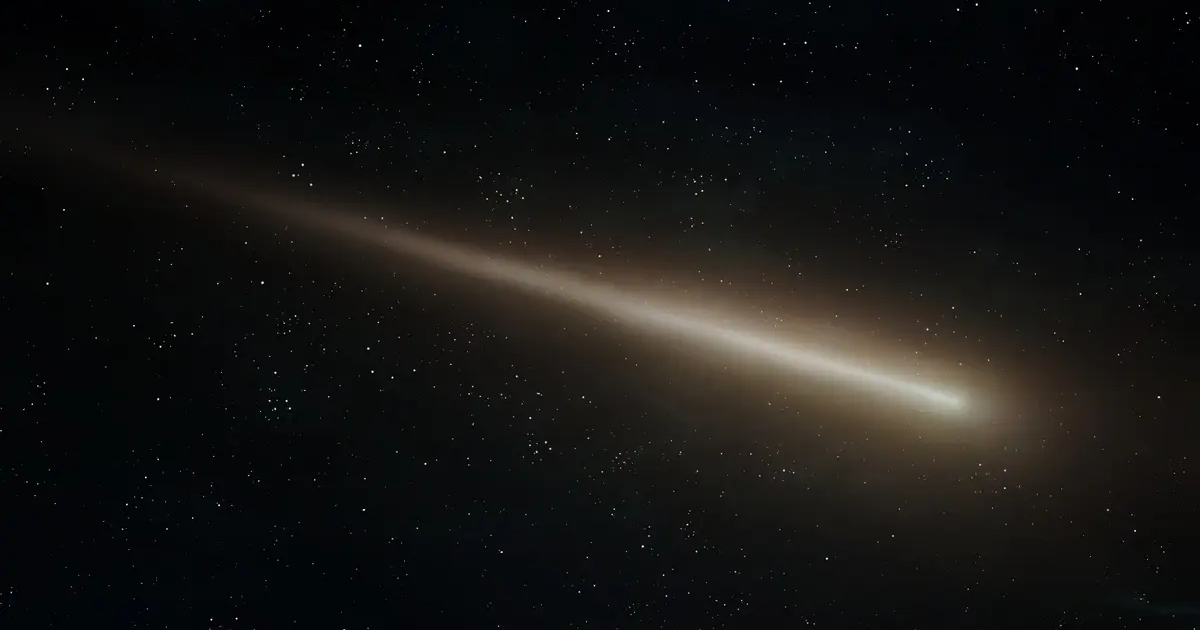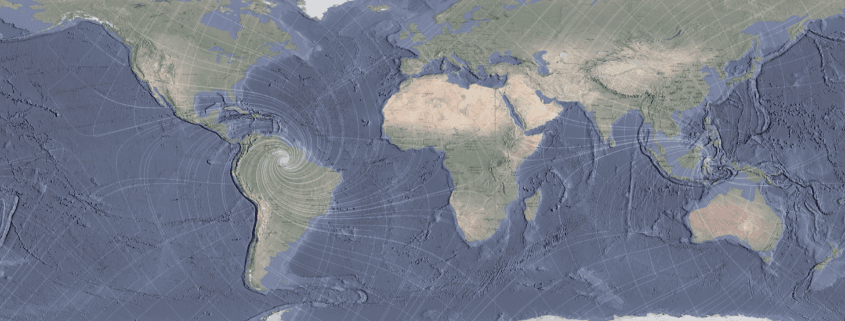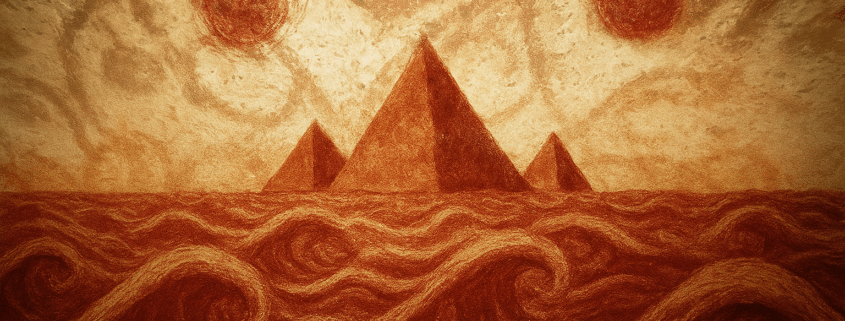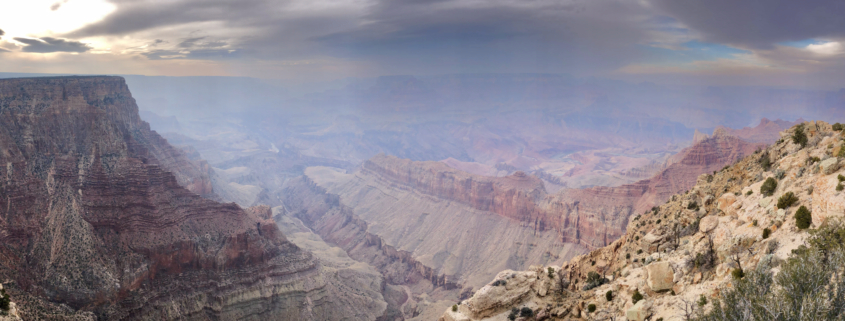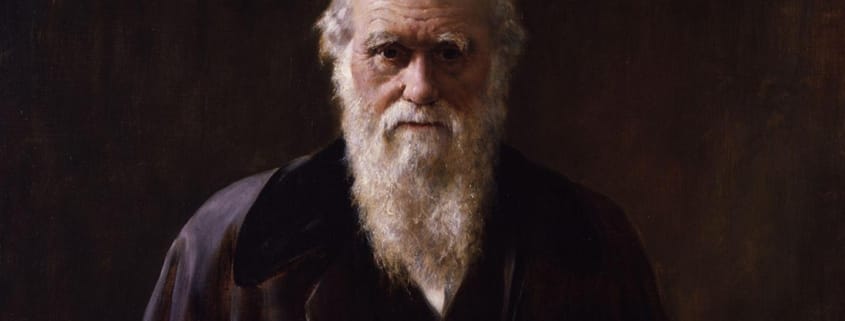Between 3 and 15 November each year, the Earth runs through a meteor stream coming from a small area in the constellation of Taurus the bull. A young stream, made up of meteors not long released from their parent comet, would be narrow and probably strong, and the Earth would pass through it in half a day or so. The Geminid meteor stream is one such, the Earth encountering it on the December each year and the shower being over by 12 December The Taurid meteor stream, on the other hand, takes the Earth 12 days to cross, and it is not very intense; it ‘looks old’. It has two main branches, northern and southern, emerging from slightly different parts of the constellation, the branches being of about equal intensity.
The Earth runs into the same meteor complex in the summer but the meteors, striking the day-time hemisphere of the planet, are not then visible to the naked eye. This day-time stream, the so-called Beta Taurids, was discovered with radar using the Jodrell Bank radio telescope in the 1950’s. The Beta Taurids come in between 24 June and 6 July with a sharp peak on 30 June each year. The orbits of these daytime Taurids match those of the southern Taurids closely. At first sight it seems that there is nothing exceptional about the Taurids; they are only one of seven or eight strong meteor streams which occur at various times throughout the year, and they are not particularly intense. To the casual observer the only noticeable feature of the stream is the high proportion of fireballs it produces, bright meteors which light up the landscape. Again, this is an indication of age, smaller meteors in the stream having long ago been destroyed in interplanetary space by processes of erosion.
Orbiting with the Taurid meteor stream is a small comet, discovered in 1818 by Pons. An orbit was calculated for this comet by Johann Encke, a pupil of the famous mathematician Gauss who had developed a method for calculating the orbits of bodies from their movement across the sky. Encke not only found an orbit, he showed that the comet was the same as one detected by Mechain in 1786, Caroline Herschel in 1795 and Pons himself in 1805. Encke predicted that the comet would return in May 1822 and in due course its return was observed, from Australia. There are interesting historical parallels with Halley’s Comet; in both cases the comet is named, not after the discoverer, but after the man who calculated the orbit; Encke’s Comet was the first instance after Halley of the recognized return of a comet; and, like Halley’s Comet, it established the existence of a new class of object. Its orbit, in fact, is unique amongst the known comets.There are about a hundred known short-period comets (say with orbital periods less than about 12 years as against a few million years for the long period ones).
All of these, with the sole exception of Encke’s Comet, are in orbits which sooner or later lead to a close encounter with Jupiter and ejection from the Solar System by the powerful gravitational pull of that planet. But Encke’s Comet has somehow established itself in a stable orbit such that it never comes within the Jovian sphere of influence. It does however come close to the Earth. In addition there may be one or two thousand asteroids over a kilometer across in orbits which make them a potential collision hazard with the Earth. None is more than about 10 kilometres across, their surfaces are extremely dark, and fewer than fifty have been discovered. They are known as Apollo asteroids after the prototype discovered in 1932. Encke’s Comet is in fact the sole example of an active comet in an Apollo orbit. Without decay or collision, the comet would probably continue in orbit for tens of millions of years. The orbit is highly elongated (figure 7) and the comet may approach to within 0.34 astronomical units of the Sun, when its surface temperature reaches 450 degrees centigrade, and go out to 4.1 astronomical units, when its temperature is -120 degrees centigrade. The comet’s orbit is inclined at only 12 degrees to that of the Earth’s. This low inclination and the shortness of the orbital period, ensure that there is frequent interaction between the Earth and the material of the Taurid stream, with the potential for occasional very close encounters with Encke’s Comet. On the face of it, then, the Taurids seem to be an elderly, diffuse meteor stream with no peculiar characteristics other than their association with a comet, in an unusual orbit, and just too faint to be seen with the naked eye. There is much more to the Taurid stream, however, than this.
In a study of fireball records from the first to the fifteenth centuries AD, the astronomers Astapovic and Terenteva found that the fireball flux from the Taurids was much more intense a thousand years ago (see figure 4 (b)), indeed the northern stream was then the stronger of the two. The Soviet astronomers found that ‘Taurids were the most powerful shower of the year in the eleventh century (with 42 fireballs belonging to them) and no shower, not even the great ones, could be compared with them as to activity’. In the not too distant past, therefore, the Taurids were revealing themselves as outstanding performers in the night sky.
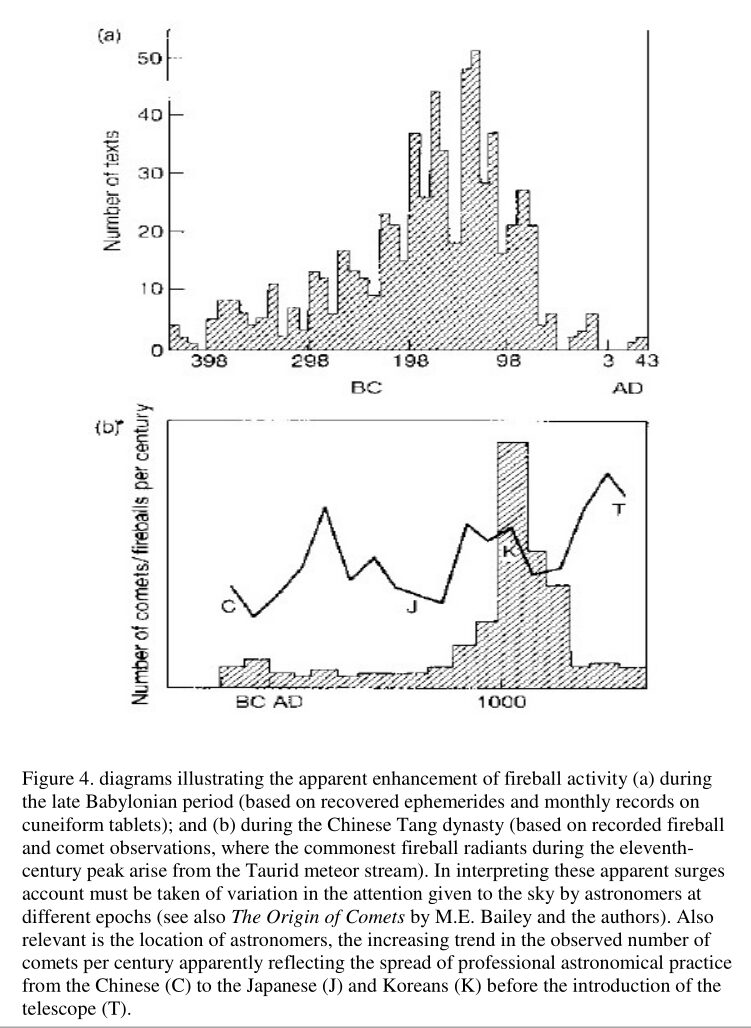
Two recent discoveries confirm the suspicion that the stream is a remarkable one. The first of these is that, amongst the 80 or so known Apollos, 6 or 7 are orbiting within the Taurid meteor stream (table 6). There are some interesting object in table 6. Hephaistos, for example, is the largest known Apollo asteroid, being about 10 kilometres in diameter. Its orbit closely resembles that of the comet’s in every respect but one: the long axis isroughly at right angles to that of the Encke orbit. The orientations of these orbits change very slowly, only a few degrees in a millennium. It could be that Encke’s Comet and Hephaistos were once one body, but if so they must have separated over 20,000 years ago. Then there is Oljato, a dark asteroid about 1.5 kilometres across. This body shows visual evidence, through the telescope, of slight outgassing. Further, when the Pioneer Venus probe passed near the asteroid on several occasions in 1982 and 1983, magnetometers on board recorded sudden changes in the magnetic field, as if the probe were passing through magnetized gas in the wake of the asteroid. It looks as if the ‘asteroid’ is in fact an almost defunct comet.
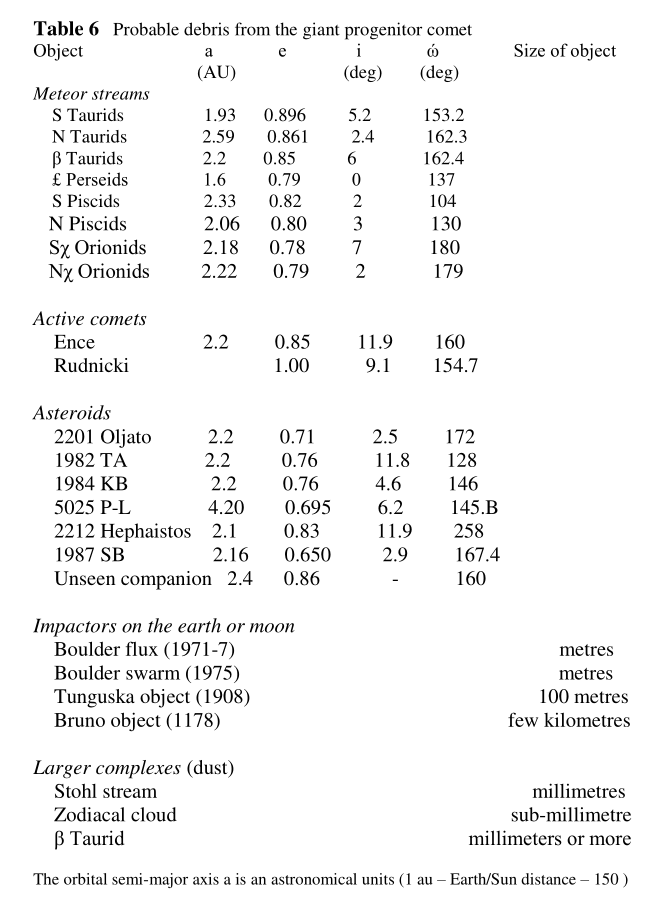
Each of these bodies pursues an elliptical orbit around the Sun, but because of the influence of the planets, Jupiter and Saturn in particular, these orbits slowly evolve. The size and shape do not change greatly but the orientation of the orbit in space does. First, relative to the mean plane of the Solar System, the inclination of the orbit slowly oscillates up and down; but more significant is the orientation, in the Earth’s orbital plane, of the orbit’s long axis. If the asteroids were unconnected with each other and with Encke’s Comet their long axes would be orientated randomly; but they are on the whole closely bunched. It can be shown that these is less than one chance in a million that even three asteroids would lie so close to the orbital track of Encke’s Comet by chance. Now it is very unlikely that these bodies are the only ones orbiting within the Taurid meteors: discovery of the Apollo asteroids as a whole is only about 5 per cent complete. We are therefore led to the remarkable conclusion that there are between one and two hundred asteroids of more than a kilometer diameter orbiting within the Taurid meteor stream. It seems clear that we are looking at debris from the breakup of an extremely large object. The disintegration, or sequence of disintegrations, must have taken place within the past twenty or thirty thousand years as otherwise the asteroids would have spread around the inner planetary system and be no longer recognizable as a stream.
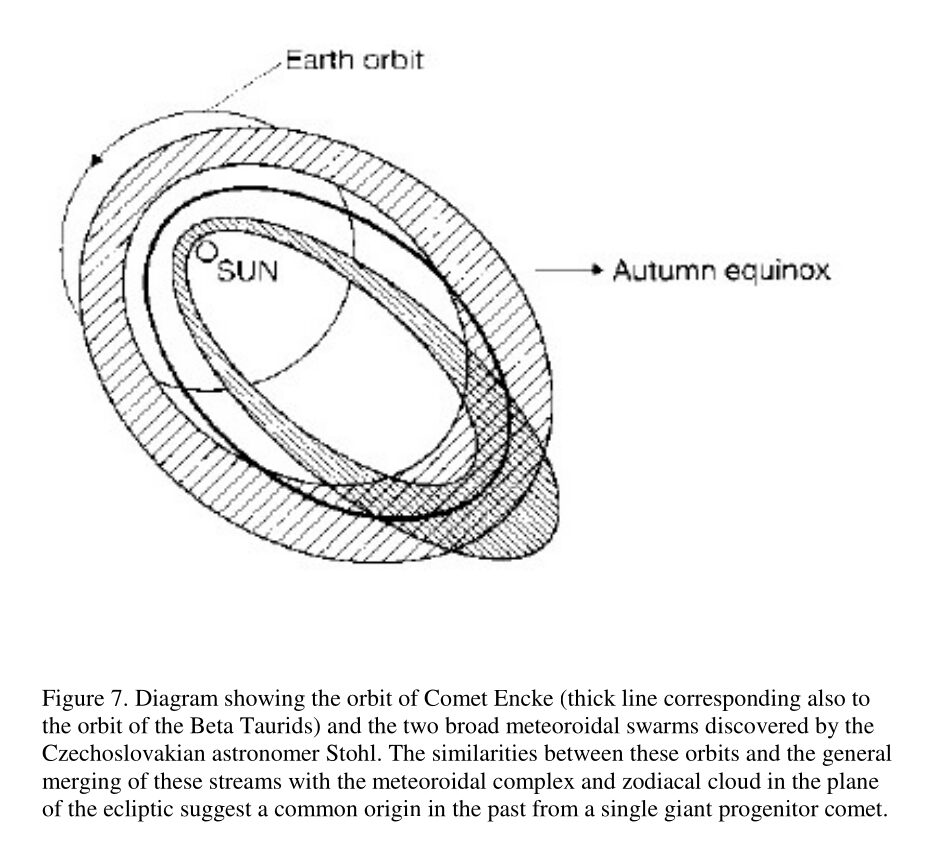
The existence, in the not too distant past, of a giant comet in an Apollo orbit also explains the existence of the zodiacal light. In the early evening, or just before sunrise, this delicate, beautiful pyramid of light can be seen rising out of the horizon, lying along the line of the zodiacal constellations. It is best seen in the tropics, where it rivals the Milky Way, but unlike the Milky Way it has a more regular, smooth appearance. We have seen that the zodiacal light is made up of light scattered from myriads of bodies orbiting between the inner planets. It is brightest close in to the Sun, and it could be that ancient Egyptian portrayals of the Sun as a winged disc refer to the zodiacal ‘wings’ extending from it. From the rate at which the Earth sweeps up meteors one finds that the mass of small meteoric material in the zodiacal cloud, say particles less than a millimeter diameter, is perhaps 20 to 40 billion tons.
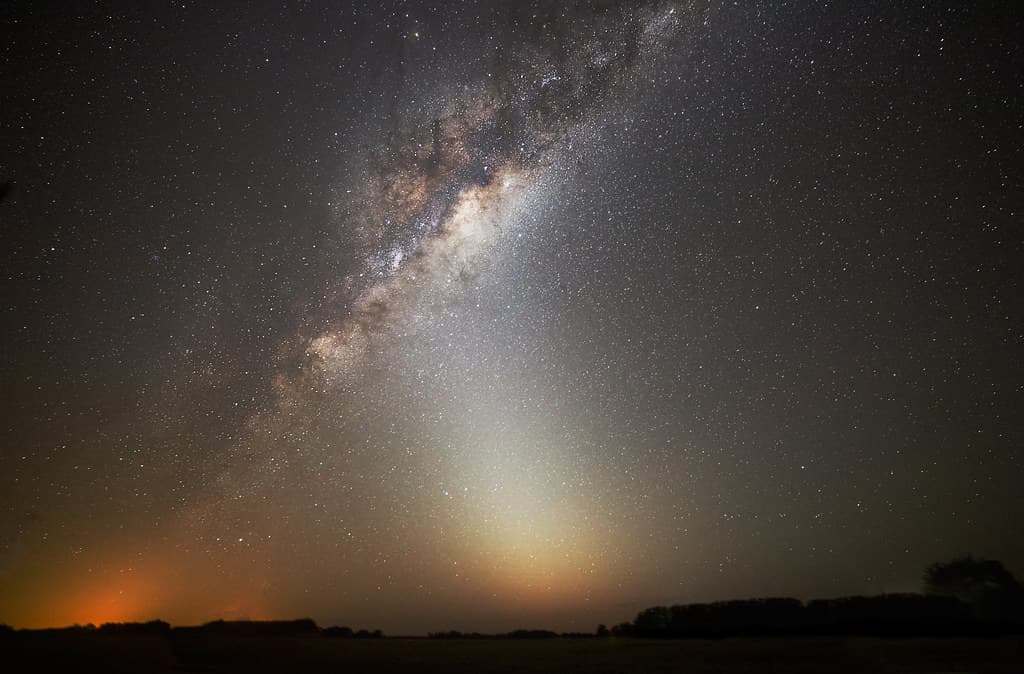
Zodiacal Light
About half of this belongs to the Stohl stream. Now the particles orbiting within the cloud collide at a few kilometers persecond, and break up, the microscopic debris eventually spiraling into the Sun. The zodiacal cloud loses between 10 and 40 tons of mass every second in this way, and without replenishment it would vanish in about fifty or a hundred thousand years.And yet, there are no adequate sources of replenishment for this dust at the present time. 82 Encke’s Comet is the major known supplier of dust in the inner planetary system at present, but even so, it loses only an average of a ton a second of material over an orbit, only 0.3 tons per second of which is dust; it cannot even remotely resupply either Stohl stream or zodiacal cloud.
Once more, there seems to be no avoiding the conclusion that the progenitor of Comet Encke and the Stohl stream must have been a truly exceptional body, in the same class as the great historical comets. And it must have been pouring out dust copiously in the not too distant past, since the Stohl stream, diffusing into the zodiacal cloud as a whole, would not stay recognizable for more than twenty thousand years or so.
Backtracking the orbits of Encke and Oljato, we find that 9500 years ago the orbits were nearly identical. It is possible there was a major disintegration of the prime body then, with much debris created of which Comet Encke and Oljato are the largest known bodies, followed by similar disintegrations of the other comets and asteroids of the stream. Oljato itself is in an orbit which brought it virtually into the Earth’s orbital plane for some centuries around 3000-3500 BC, ensuring a series of very close encounters with the Earth over the period. If, as is very likely, it was then an active comet, it must have been a spectacular zodiacal traveler, whose cycles of coming and going, flaring and fading, must have made it a perplexing object in its own right, even if overshadowed by the more formidable Encke. The meteor orbits, traced back in time, seem also to come together at particular epochs. The present-day northern Taurids, for example, may have broken away from Encke’s Comet or a Taurid asteroid about a thousand years ago, consistently with the surge of activity recorded in the sky around that time, particularly by the Chinese astronomers (figure 4). The whole complex therefore seems to be undergoing an avalanching self-destruction as the debris accumulate and collide. Orbital backtracking of the Taurid meteors and asteroids thus reveals a system which has been evolving actively within the timescale of civilization.
In figure 9 are shown the nodes of the orbit of Encke’s Comet, that is, the two intersections of the comet orbit with the ecliptic plane. Extremely close encounters with the comet are only possible when the nodes intersect the Earth’s orbit. For Encke’s Comet these intersections occurred around 200 BC and 600 BC, and again around 3900 BC and 3700 BC. As we have seen, if Encke’s Comet was active at any of these dates, the intersection would produce the most spectacular celestial phenomena. However, even between nodal intersections fierce annual meteor storms are expected, with peaks in activity recurring at intervals of about fifty years. The dates should not be taken too literally since the encounters may have taken place, not with Encke’s Comet, but with a larger progenitor of which Encke is a fragment.
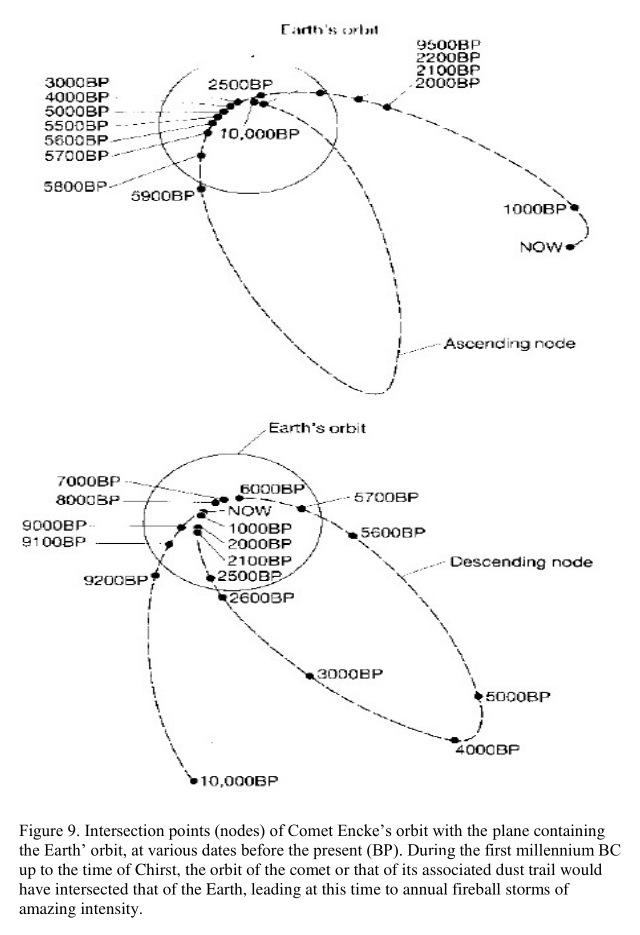
This unique complex of debris is undoubtedly the greatest collision hazard facing the Earth at the present time. It is likely that hundreds of thousands of bodies, each capable of yielding a multi-megaton explosion on Earth, are orbiting within the stream. Such bodies are expected from the progressive disintegration of the asteroids — inactive comets — with it. From time to time collisions will remove some proportion of the dusty crust from an asteroid, exposing its icy interior. It will then become a comet for a few centuries. Probably, also, there are one or more concentrations of material — temporary swarms — arising from the rapid disintegration of one or two dominant but yet undiscovered bodies within the Taurid stream. The Moon, as we have noted already, ran through such a swarm between 22-26 June 1975. Lunar seismometers left by the Apollo astronauts recorded the impacts of a swarm of ton-sized boulders, as many hitting the Moon over those five days as had struck it over the previous five years (figure 6).
We seem to have found, then, the vital element missing from the works of the early Biblical catastrophists — Whiston, Radlof, Donnelly, Velikovsky and the rest — namely, a scientific rationale, a relatively secure astronomical framework. Biblical and geological catastrophism are, after all, inextricably linked. While this clearly justifies an urgent reappraisal of the ancient tales of celestial catastrophe, the new information is extremely awkward for a generation of astronomers who insisted that Velikovsky was no more than an erudite charlatan. Astronomers, indeed scientists generally, like to think themselves as tolerant judges and very adaptable to fresh discoveries. The evidence in this instance is however mostly the other way. One may therefore expect that in some circles the data now emerging from the Taurid meteor stream will be ignored in the hope that something reassuring will turn up.


